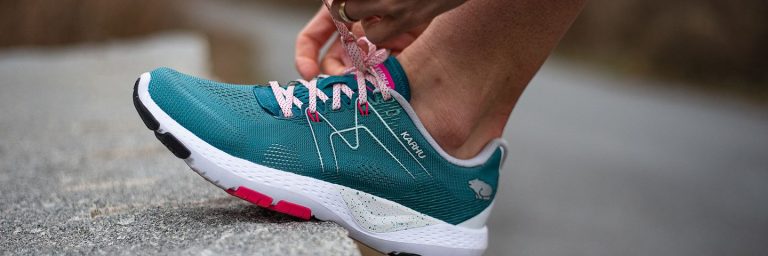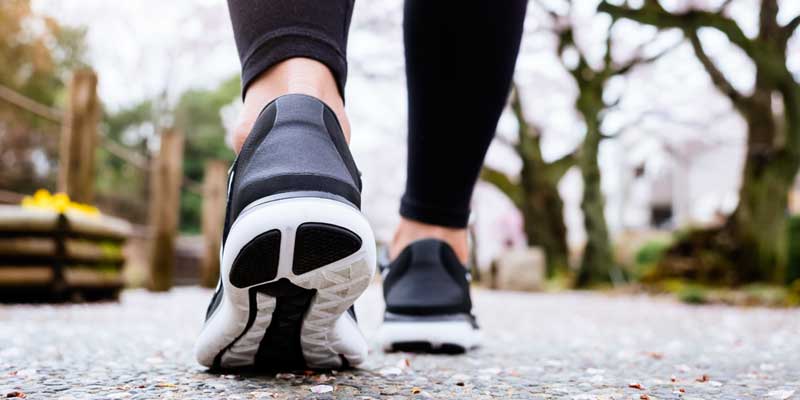
Yes, training shoes can be used for walking, providing support and cushioning for the feet. Training shoes are versatile and can be used for various activities, including walking.
They offer the necessary support and cushioning for your feet, helping to absorb impact and reduce the risk of injuries. Whether you are going for a casual stroll or a brisk walk, training shoes can provide comfort and stability. With their durable construction and shock-absorbing soles, training shoes are designed to withstand the repetitive motions of walking.
So, if you already have a pair of training shoes, you can certainly use them for walking without any issues. Just make sure they fit properly and are in good condition to ensure optimal performance and comfort on your walks.

Credit: trainerworld.co.uk
Training Shoes For Walking Benefits
Training shoes offer multiple benefits for walking, ensuring optimal comfort, support, and stability. Designed with features like cushioning, flexibility and traction, these shoes help reduce fatigue. This making them an ideal choice for walking workouts.
Improved stability and support:
- Training shoes are specifically designed to provide stability and support to your feet while engaging in physical activities. This added support can help you maintain proper alignment and reduce the risk of injuries during your walking sessions.
- The structured design and sturdy materials of training shoes offer excellent stability. This allows your feet to feel grounded and well-supported as you walk.
Cushioning for impact reduction:
- Walking can put a significant amount of impact on your joints, especially in high-impact areas like the heels and forefoot. Training shoes are equipped with cushioning technologies. It helps absorb the shock and reduce impact when your feet hit the ground.
- The cushioning properties of training shoes provide an extra layer of protection. These making your walking experience more comfortable and minimizing the strain on your joints, muscles, and ligaments.
Versatility for various surfaces:
- Whether you prefer walking on pavements, trails, or even on uneven terrains, training shoes adapts different surfaces. Their durable outsoles provide enhanced grip and traction, giving you the confidence to explore various environments without losing stability.
- Training shoes are designed to be multidirectional, allowing natural movement and flexibility in different walking conditions. This versatility makes them suitable for different walking styles and terrains, ensuring your feet stay comfortable and supported regardless of where you choose to walk.
Using training shoes for walking brings several benefits. This includes improved stability and support, cushioning to reduce impact, and versatility for various surfaces. These features work together to enhance your walking experience, provide comfort, and help minimize the risk of injuries.
So, if you’re looking to optimize your walking sessions, training shoes can be a great choice.
Characteristics Of Training Shoes Suitable For Walking
Training shoes designed for walking should possess certain characteristics to ensure comfort and support. With features like cushioning, flexibility, and a supportive midsole, these shoes can be effectively used for walking. They provide the necessary support for the feet and ankles.
Training shoes are not just limited to the gym or athletic activities. In fact, they can also be a suitable choice for walking. Whether you prefer to take a leisurely stroll or engage in brisk power walks, having the right pair of training shoes can make all the difference.
So, what are the characteristics that make training shoes suitable for walking?
Arch Support For Proper Foot Alignment:
- Training shoes designed for walking offer excellent arch support, ensuring proper foot alignment.
- The arch support helps to distribute your body weight evenly and reduces strain on your feet. These makes your walking experience more comfortable and enjoyable.
- It also prevents overpronation or underpronation, where your feet roll inward or outward excessively, respectively, which can lead to discomfort or injuries.
Breathable Materials For Comfort:
- Walking in training shoes that utilize breathable materials such as mesh or knit uppers allows for better air circulation. This keeps your feet cool and dry.
- The breathability of the shoes prevents excessive sweating, reduces the chances of developing blisters. And it maintains overall foot comfort during extended walks.
- Additionally, breathable materials also help to prevent the buildup of odor-causing bacteria, keeping your shoes fresh and pleasant.
Lightweight Design For Reduced Strain:
- Walking for extended periods can put strain on your feet and legs. That’s why choosing lightweight training shoes is crucial for a comfortable walking experience.
- By opting for lightweight shoes, you reduce the strain on your feet. This allows you to walk for longer distances without feeling tired or weighed down.
- A lighter shoe also promotes an efficient stride and reduces the risk of muscle fatigue and discomfort.
When selecting training shoes for walking, consider the presence of arch support, breathable materials, and a lightweight design. These characteristics will ensure that your walking experience is comfortable, enjoyable, and free from foot-related issues. So grab a pair of suitable training shoes like Ryka Training Shoes, hit the pavement, and start achieving your walking goals with ease.
Key Differences Between Training Shoes And Walking Shoes
Training shoes and walking shoes have key differences, primarily in their design and purpose. While training shoes are designed for intense workouts and offer stability and flexibility, walking shoes are specifically crafted to provide cushioning and support for long walks. Few options are Best Skechers Walking Shoes, Ryka Sneakers, STQ Shoes.
Although training shoes can be used for walking, it is recommended to use shoes designed for walking due to their enhanced comfort and support.
Flexibility and range of motion:
- Training shoes are designed to provide flexibility and support for a wide range of athletic movements, including lateral movements and agility exercises.
- Walking shoes, on the other hand, are designed to provide flexibility in the forefoot area, allowing for a more natural and comfortable stride.
Traction for different terrains:
- Training shoes are designed with multisurface outsoles that offer excellent traction on various indoor and outdoor surfaces, such as gym floors and turf.
- Walking shoes prioritize traction on even surfaces, like sidewalks and trails, to provide stability and prevent slips or falls.
Impact absorption for walking-specific needs:
- Training shoes are engineered to provide additional cushioning and shock absorption to handle the high impact associated with intense training activities.
- Walking shoes are designed to provide adequate cushioning and shock absorption tailored specifically for the repetitive heel-to-toe motion of walking, reducing strain on joints and enhancing comfort.
By understanding the key differences between training shoes and walking shoes, you can make an informed decision about which type of footwear is best suited for your activity needs. So, whether you’re hitting the gym for a vigorous workout or embarking on a leisurely stroll, choosing the right shoes will ensure optimal performance and comfort for your activities.
Remember, training shoes prioritize flexibility and support for a range of athletic movements, while walking shoes prioritize flexibility in the forefoot and cushioning designed for walking-specific needs. Choose wisely, and enjoy your fitness endeavors or leisurely walks with confidence and comfort.
Potential Drawbacks Of Using Training Shoes For Walking
Training shoes may not be the ideal choice for walking due to potential drawbacks. These drawbacks could include lack of proper cushioning and support for long distance walks, which can lead to discomfort and possible injuries. It is advisable to use shoes specifically designed for walking to ensure optimal comfort and safety.
Using training shoes for walking may not provide the best possible experience due to certain drawbacks. These include:
- Lack of specific walking features: Training shoes are primarily designed for activities such as running, jumping, or weightlifting. They may not offer the specific features required for optimal walking performance.
- Less durability compared to walking shoes: Walking shoes are specially engineered to withstand the repetitive impact of walking. On the other hand, training shoes may not be as durable and could wear out faster when used solely for walking.
- Limited motion control and stability: While training shoes are designed to allow for a wide range of movements, they may lack the motion control and stability features that are crucial for long walks. This can potentially lead to discomfort or an increased risk of injuries during walking sessions.
When it comes to walking, it’s best to choose shoes that are specifically designed for this activity. While training shoes may be suitable for occasional walks, it’s important to consider the potential drawbacks discussed above. Investing in a pair of well-designed walking shoes can greatly enhance your walking experience and provide the necessary support and comfort for longer distances.
Tips For Choosing The Right Training Shoes For Walking
Choosing the right training shoes for walking is essential to ensure comfort and prevent injuries. While training shoes can be used for walking, it is important to consider factors such as cushioning, arch support, and flexibility to find the perfect fit for your walking needs.
Assess your walking style and foot type:
- Consider your arch type: Determine whether you have high, low, or neutral arches, as this will influence the type of shoe support you need.
- Analyze your pronation: Pay attention to how your feet roll inward when walking. If you overpronate or underpronate, select shoes that provide appropriate stability and cushioning.
- Look for shoes with good shock absorption: Opt for shoes that offer cushioning to absorb the impact of each step and reduce the risk of injuries.
Consider the intended walking environment:
- Choose the right outsole: If you plan to walk outdoors on various terrains, opt for shoes with a durable and slip-resistant outsole to provide adequate traction.
- Breathable materials for comfort: If you frequently walk in hot or humid conditions, search for shoes made with breathable materials like mesh to keep your feet cool and dry.
- Waterproof options for wet conditions: If you often walk in rainy or wet environments, consider shoes that are waterproof or water-resistant to keep your feet dry and comfortable.
Look for features that prioritize walking needs:
- Adequate cushioning: Look for shoes that offer sufficient cushioning in the midsole to provide comfort and protect your joints from excessive impact.
- Arch support: If you have flat feet or high arches, ensure the shoes provide adequate arch support to maintain proper foot alignment during your walking sessions.
- Stability and flexibility: Find shoes that strike a balance between stability and flexibility. They should provide enough support to prevent excessive foot movement while allowing for a natural range of motion.
- Proper fit: Always prioritize the fit of the shoes. They should have enough room for your toes to wiggle, without being too loose or too tight, to avoid blisters and discomfort.
Remember, choosing the right training shoes for walking is essential to promote comfort, prevent injuries, and enhance your overall walking experience. By considering your walking style, foot type, walking environment, and necessary features, you’ll be well on your way to finding the perfect pair of training shoes to support your walking routine.
FAQ: Can Training Shoes Be Used For Walking
Can Training Shoes Be Used For Walking?
Yes, training shoes can be used for walking. Training shoes provide support, cushioning, and stability needed for different types of physical activities, including walking. However, it’s important to choose a pair of training shoes that are comfortable, fit well, and provide adequate support for walking.
Are Training Shoes Good For Long Distance Walking?
While training shoes can be suitable for short walks or casual walking, they may not provide the necessary support for long-distance walking. Specifically designed walking shoes usually have features like enhanced cushioning, flexibility, and arch support, which are better suited for the repetitive motion and impact of long-distance walking.

Can I Use Running Shoes For Walking?
Yes, running shoes can be used for walking. Running shoes are designed to provide shock absorption, stability, and cushioning, which are beneficial for walking as well. However, keep in mind that running shoes might have a different sole pattern or weight distribution compared to walking shoes, so it’s important to choose a pair that feels comfortable and supportive for walking.

What Is The Difference Between Walking Shoes And Training Shoes?
Walking shoes are specifically designed for walking, with features such as flexible soles, cushioning, and arch support that cater to the specific needs of walking. Training shoes, on the other hand, are designed for a variety of physical activities, including walking.
However, training shoes might have a heavier build, less flexibility, and different cushioning compared to dedicated walking shoes. You may also check, Are Converse Good Walking Shoes?
Conclusion : Training Shoes as Walking Shoes
In summation, training shoes can indeed be used for walking, offering a versatile option for those seeking comfort and support during their walking routines. With their cushioned soles and stability features, these shoes can effectively absorb impact, reduce strain on joints, and enhance overall walking experience.
Consider factors like arch support, cushioning, and breathability to find the perfect pair for your walking needs. Remember to prioritize comfort and quality over style to ensure a well-balanced walking experience. So, next time you’re thinking of lacing up for a walk, don’t hesitate to slip on your trusted training shoes and hit the road with confidence.




